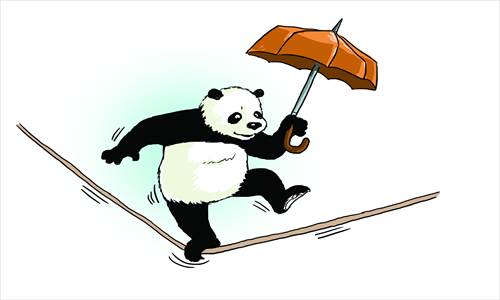China's strategic edge will be blunted without further reform

China has long excelled in the application of strategic thinking to economic policy design.
From the Fifth Five-Year Plan of the late 1970s, which ushered in the "reform and opening-up" of Deng Xiaoping, to the current 12th Five-Year Plan which lays out the broad parameters of a pro-consumption rebalancing of the Chinese economy, strategy has been the essence of China's modern development miracle.
Great companies typically restructure and rethink their strategic visions when they are strong. It is the same with great economies. Now is the time for China and its new leadership to draw on its strategic strengths and push ahead with a major realignment of its vibrant economy.
The outgoing Chinese leadership team of Hu Jintao and Wen Jiabao spent the better part of the past few years leading the debate on what comes next for China's increasingly "unbalanced, unstable, uncoordinated, and ultimately unsustainable" economy. That debate is now settled.
It will be up to the new administration to focus on the implementation of a broad set of consumer-led reforms.
These include laying out a blueprint for the development of the service sector, funding the social safety net, liberalizing an antiquated residential-permit system, reforming State-owned enterprises, and ending financial repression on households by lifting artificially low interest rates on savings.
Delay is not an option. The longer China puts off the heavy lifting of rebalancing, the more it will need to rely on short-term tactical adjustments rather than longer-term strategic initiatives to guide its economy.
Yet this is precisely the failed approach that has forced the West to embrace reactive policymaking tactics, always playing catchup to yesterday's crisis and making incremental adjustments that do little other than kick the proverbial can down the road.
China cannot afford to lapse into such an approach. And yet since the global financial crisis of 2008-09, there are signs that Chinese policymakers may be succumbing to the Western disease.
While the massive fiscal stimulus of late 2008 was certainly understandable, it left China with a series of complications that it is still struggling with: a large buildup of local government debt, renewed froth in residential property markets, and a worrisome surge of nonbank credit growth, the so-called shadow banking problem.
In other words, the imbalances that Wen first warned of in 2007 are all the more worrisome in 2013.
Without rebalancing, China is running out of options to avoid the inevitable shocks of the future.
While it is tempting to breathe a sigh of relief at the latest soft landing in the Chinese economy, there is a limit to the resilience of an unstable and unbalanced growth model.
I am hopeful that China's new leaders will seize the moment and move ahead aggressively with new pro-consumption reforms. Vice Premier Li Keqiang headed up the large Chinese research team that co-authored, along with the World Bank, China 2030, an impressive document published in 2012 that lays out the roadmap for the next stage of China's development. He knows full well what needs to be done. The test will come in translating that knowledge into bold action.
A rebalanced Chinese economy offers enormous opportunity for itself and the rest of the world. From China's perspective, shifting to more of a consumer and service-led growth dynamic would usher in an era of slower and more sustainable growth.
Labor-intensive services generate about 35 percent more jobs per unit of GDP than manufacturing and construction do, so growth in Chinese GDP could slow to around 7 percent without jeopardizing the nation's all important labor absorption and poverty-reduction objectives.
Similarly, service-led growth is far less resource and carbon-intensive, thereby allowing China to transition to a lighter, greener, cleaner, and ultimately more sustainable growth and development trajectory.
At the same, a rebalanced Chinese economy is an enormous opportunity for other nations in a growth-starved world. A stunning shift is about to unfold in the mix of the world's second largest economy, with nothing but upside for private consumption and services.
Over the next 10 years, the GDP share of both of these embryonic sectors could rise by at least 10 percentage points.
The Chinese development miracle is now in its fourth decade. There is far more to come. But that will only occur if China goes back to its great strengths as a strategic manager of its extraordinary economy.
That will require emphasis on a new agenda of rebalancing and reforms. The sooner the better.
The author is a faculty member at Yale University and former chairman of Morgan Stanley Asia. opinion@globaltimes.com.cn
